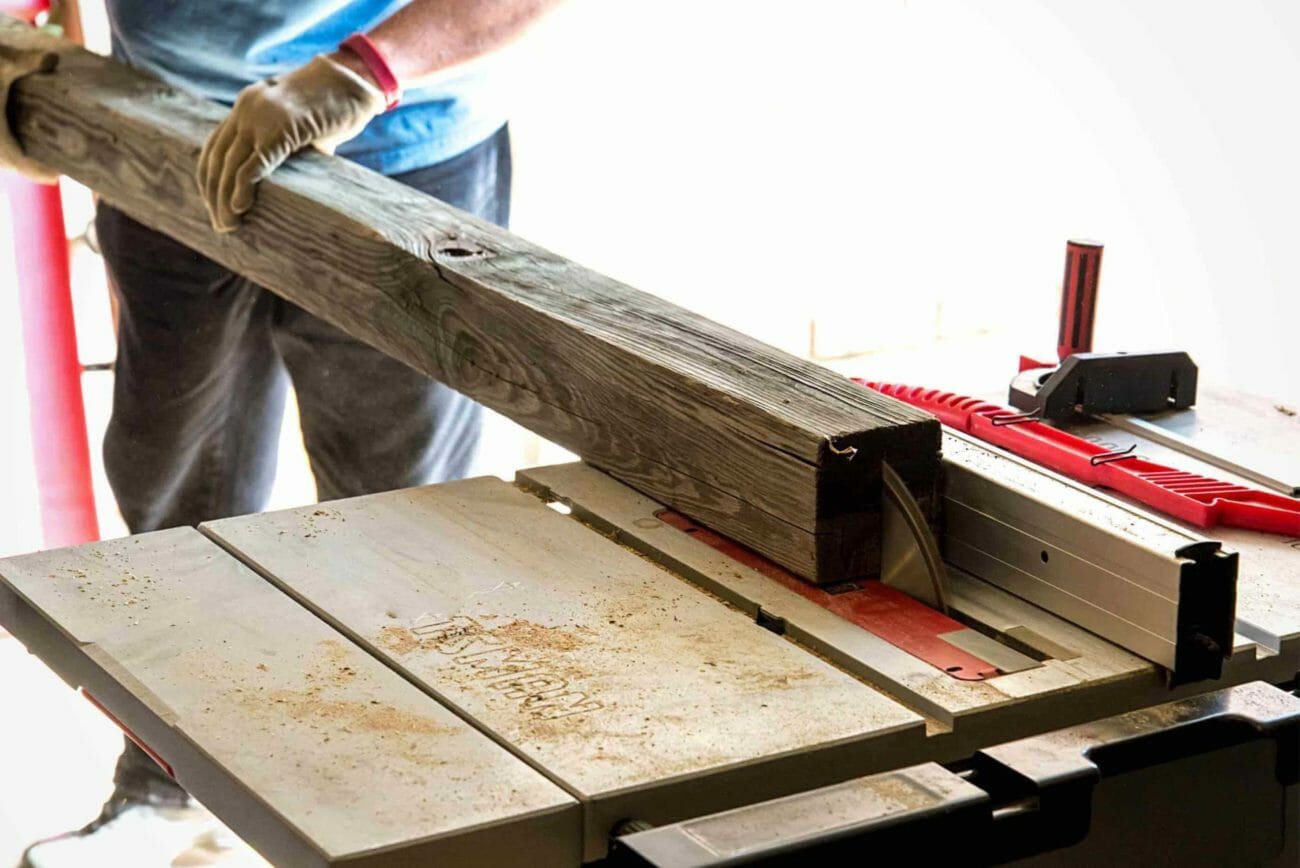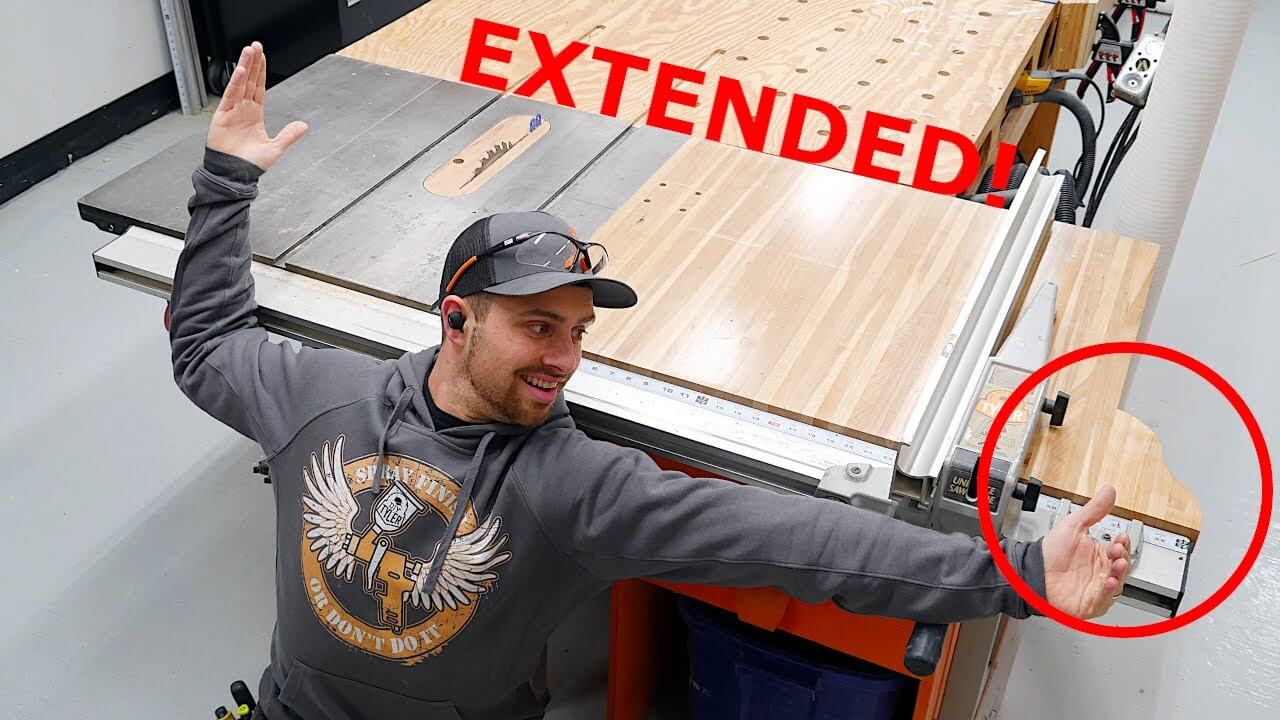What is Rip Capacity on a Table Saw?
If you’re not already familiar with table saws, you’re seriously missing out, as the majority of skilled craftsmen out there believe that they truly are the superior saw that every modern-day woodworker should own.
A table saw is most definitely a superb piece of equipment to have in any workshop due to its versatility and ease of use.
But, apart from all the praise table saw’s receive from fellow woodworkers, what materials can they cut, and what is the rip capacity of a table saw? Are there limits in regards to what lumber can or cannot be ripped with a table saw?
Well, let’s get into all that and see what these esteemed saws are actually capable of when it comes to ripping capacity.
What Can a Table Saw Do for Woodworking?
Table saws are primarily used as a woodworking tool. They consist of a circular saw blade that is mounted on an arbor, that is driven by an electric motor.
When compared to a table saw, a circular saw blade spins extremely quickly, which enables its serrated edge to cut through planks of wood like it’s butter.
The blade will normally be visible protruding from the top of a table, which provides support for the material, often wood, being cut.
You can control the depth of the cut by moving the blade up and down. So, the higher the blade protrudes above the table, the deeper the cut will be.
But if you want to cut angles with a table saw, the angle of the cut is controlled by adjusting the angle of the blade itself.
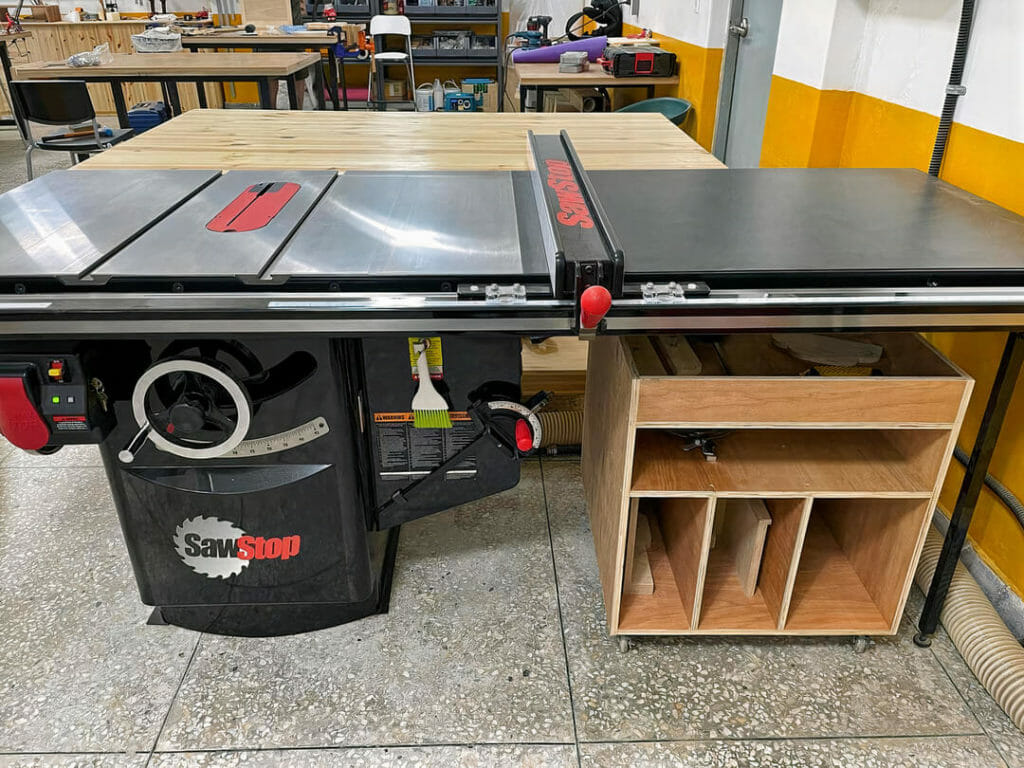
What Does the RIP Capacity of a Table Saw Mean?
There are many different components to consider when buying and using a table saw. Apart from the obvious size and price, you’ll need to consider rip capacity too.
This may seem confusing at first, but once you wrap your head around it, finding the perfect table saw will be a walk in the park.
“Rip” simply refers to cutting wooden boards against the grain. As table saws theoretically have the ability to cut infinitely long pieces of wood, the rip capacity can indicate just how much space you can spare at maximum between the edge of the blade and the edge of the fence.
For example, imagine that you bought a table saw that has a 24” rip capacity and you bought a sheet of plywood that measures 48” x 96”.
If your plan was to cut this plywood board in half, your best option would be to cut it into two 24” x 96” pieces as that is all that will be able to fit between the blade and the fence.
However, if your table saw has a 20” rip capacity, you would only be able to cut your plywood board into two 20” x 96” pieces, as this is all you’ll have enough space for.
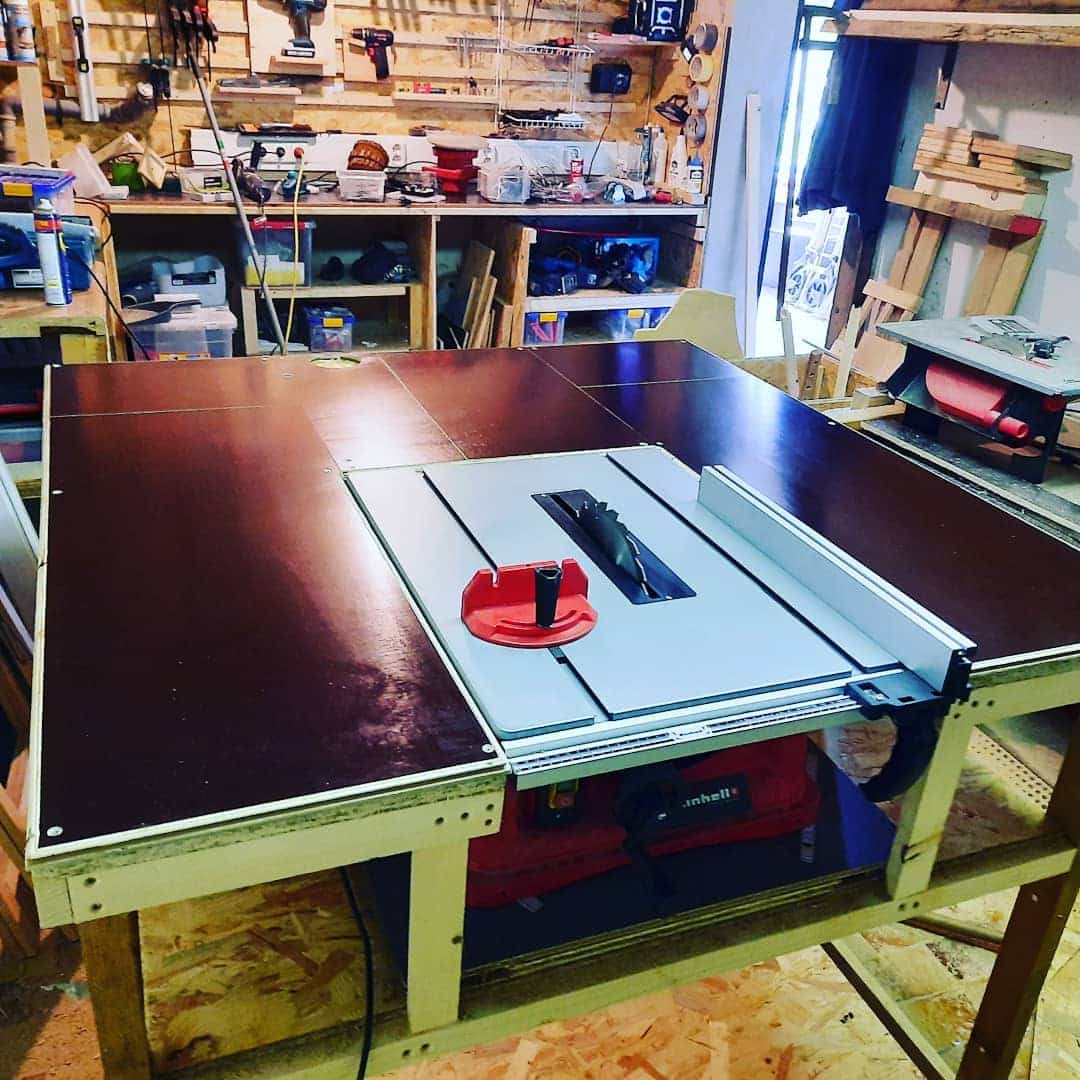
How Much RIP Capacity Do I Need?
Whether you’re planning on buying your first ever table saw or simply upgrading your old one, rip capacity is a specification that you need to take notice of.
There isn’t a magic number that you need to look for when it comes to rip capacity, instead, you must ask yourself what you’re going to use your table saw for.
If your passion is woodworking projects, then you won’t need much rip capacity at all. In fact, you could probably get away with buying a table saw with a 22” rip capacity, or even slightly less.
If all of your projects are going to be small household makes, you’ll want to avoid getting a table saw with a super high rip capacity as it will take up more room.
Space Considerations When Using a Table Saw
A large table saw’s superior rip capacity almost always translates to more space being required in your home, garage, or workshop.
When you start comparing saws based on the requirements of your workspace and compare say the likes of a table saw vs a miter saw, the table saw will typically consume much more floor space.
But, that said, you’ll be able to tackle larger-scale projects due to a table saw’s increased rip capacity.
Keep in mind though, that every 20” of ripping capacity adds roughly 4ft 2” onto the amount of space you’ll need. So the decision to go big or go small needs to be carefully considered.
Before you head out to purchase a new saw for your ripping needs, consider creating a ‘mock’ table first. You can do this by measuring the extra rip capacity with a measuring tape.
You can either hold it there and visualize where your new table saw will reach, or you can place a table of the same length there to test it out.
It’s really difficult to do this by eye and without careful measurements, you may end up surprised by just how much space a table saw can occupy in your workshop.
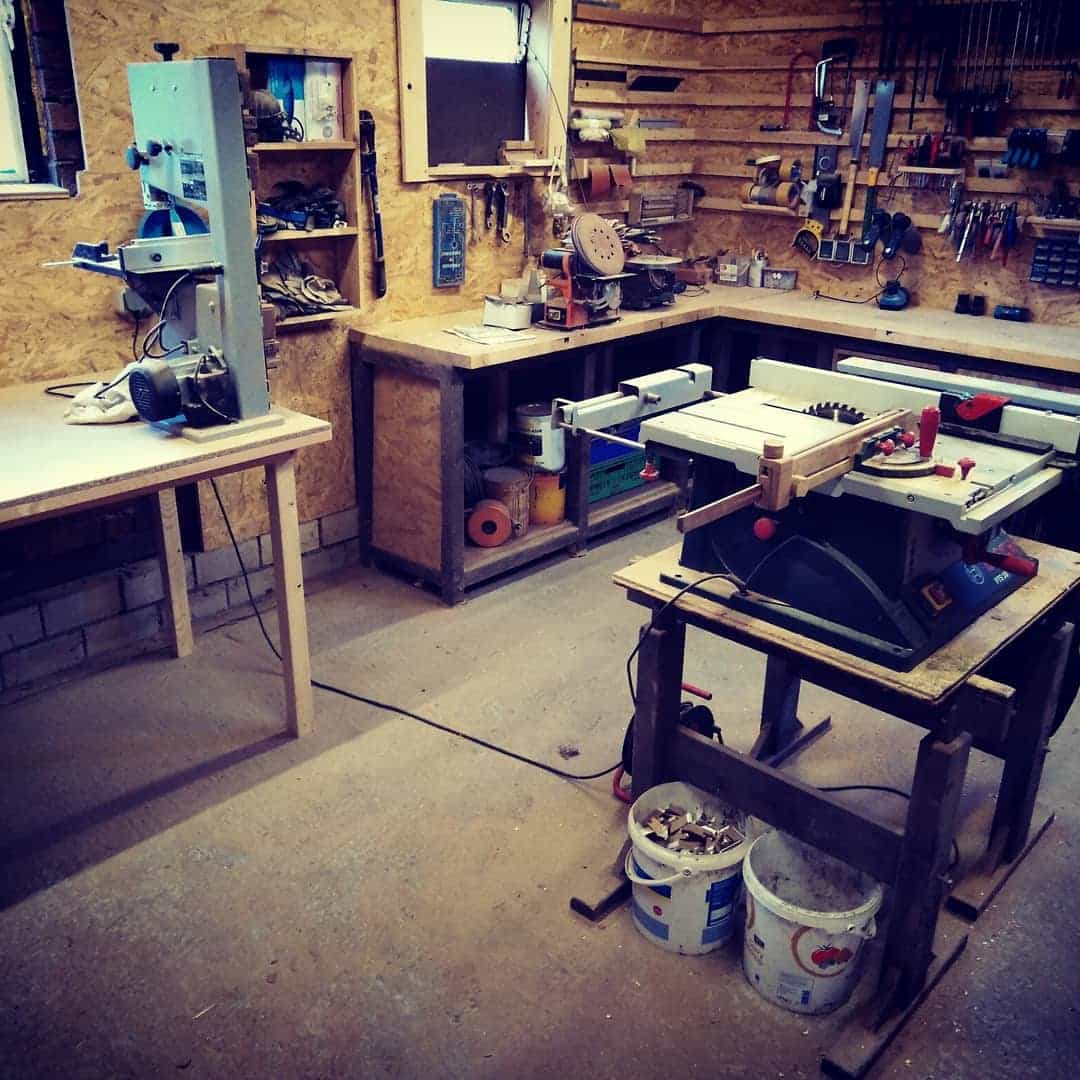
Can You Increase the RIP Capacity of a Table Saw?
If you can’t justify getting a new table saw right now and you’re unhappy with your current one, fortunately, there are a handful of different ways in which you can increase the ripping capacity of your table saw.
Some of these methods are more difficult than others. Some include modifying the blade of the saw itself and others include adding an additional table onto the side of your table saw.
This last option is great for increasing the rip capacity of your table saw, while also maintaining the highest safety standards, so you can use your table saw safely and effectively.
You may find that many brands that sell table saws may also sell tables that are specially designed for specific models of table saws that they sell.
How to Extend Rip Capacity of Table Saw?
Without going out and purchasing a new saw with a larger table, there are a few options at your disposal to gain some extra length without digging into your pocket.
Here are the three basic options you have to increase your table saws rip capacity:
These tables will extend your current table and in turn increase, the overall maximum rip capacity of your table saw.
We highly recommend checking these out before splashing out on a brand new saw as they provide more space and improve your saw for just a fraction of the price.
However, it’s important to make sure that any extra surfaces you purchase are compatible with your current equipment and tables- always check the manufacturer’s specifications before you make a purchase.
Alternatively, you could always try moving the fence itself over, just one or two bolts. This can sometimes help to increase the rip capacity of your table saw.
There are dozens of other ways to increase the rip capacity and plenty of helpful articles and useful YouTube tutorials to guide you.
What Is the Most Common RIP Capacity?
While rip capacity can differ dramatically from table saw to table saw, the three most common rip capacities are:
- 28 inches: This can be considered the entry-level rip capacity for most cheap and mid-priced table saws. This rip capacity will allow you to rip a standard 48″ of plywood in half. Most craftsmen find that there is rarely a need for a ripping capacity greater than 28”, as most table saws allow more than enough rip capacity on the left to allow large sheets to be cut.
- 30 inches: This is often considered the perfect capacity for most woodworkers. 30” will be able to handle the majority of cuts that you make. However, you may occasionally end up with a 36″ that you won’t be able to make.
- 50 inches: This is the largest of all table saw rip capacity sizes. It is likely that only the high-end and biggest table saws will have a capacity this size. However, the vast majority of cuts will never require a capacity this large and it’s important to remember that the bigger the saw, the bigger the price tag. One big advantage to a 50” rip capacity is the fact that you can perform a “square cut” on a sheet of plywood, cutting it in half in one sweep.
If you find yourself cutting hardwood often, then it is generally a far better idea to opt for a table saw that has a larger rip capacity.
This is because an increased rip capacity can affect the overall performance of your table saw.
You will find that compact, portable, and often inexpensive table saws are not entirely suitable enough to be ripping through hardwood varieties frequently. But upgrading your existing portable table saw is always an option if you’re on a budget and can’t afford the additional cost of a cabinet table saw.
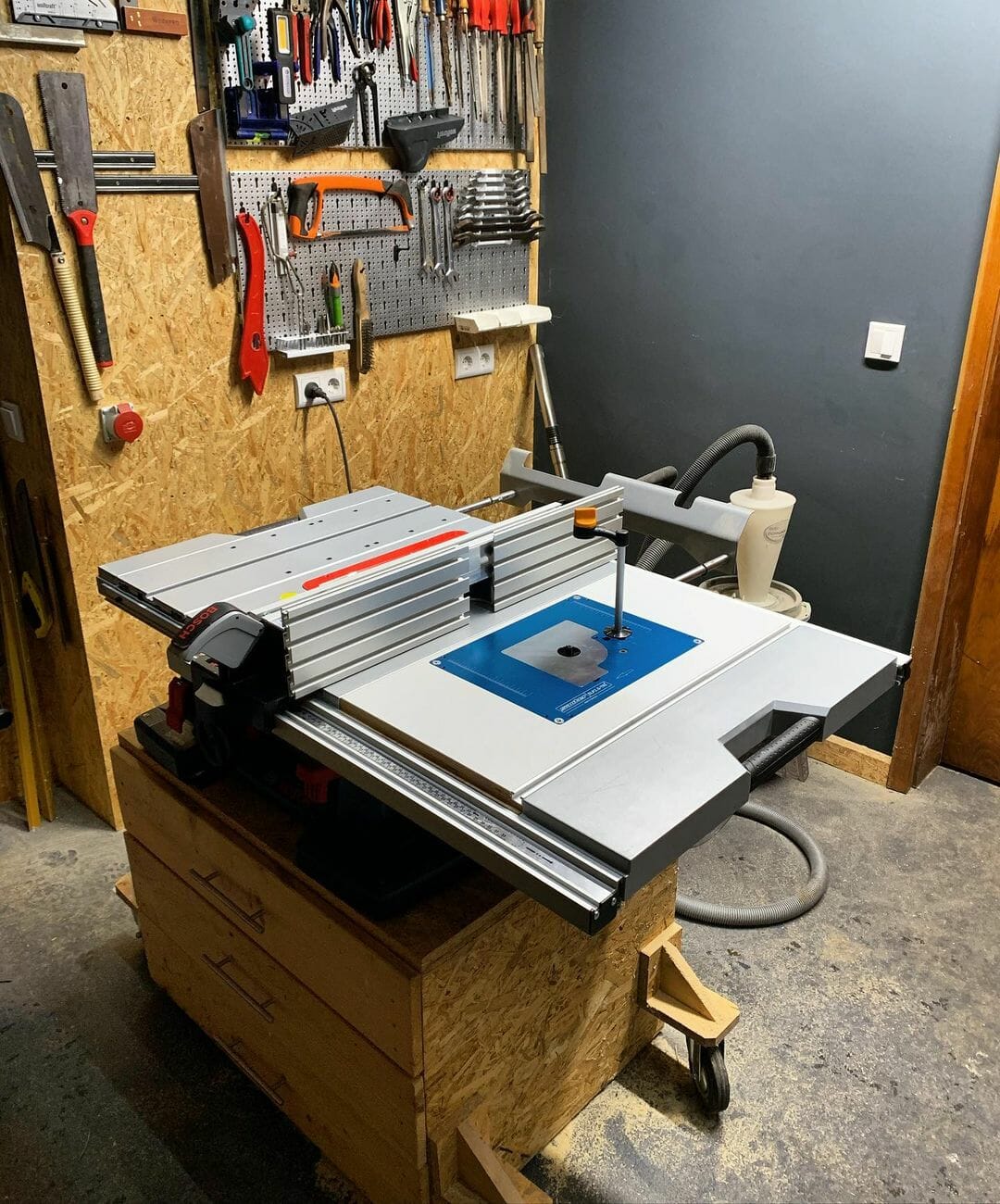
In Conclusion
Simple DIY upgrades to your table saw like increasing the rip capacity or sharpening your table saw blade can be achieved within a few spare hours of free time.
Determining the required rip capacity of a new table saw you’re interested in buying for your workshop, and or extending the rip capacity of your existing table saw will allow you to take on bigger jobs.
Conducting some slight altercations to the table on your table saw could extend the cutting capacity of your table saw by several inches. And who wouldn’t want several more inches?!
All jokes aside, upgrading the rip capacity of your table saw is a lazy afternoon task that will undoubtedly pay dividends in the long run. Well, best of your luck in whatever direction you decide to go, and stay safe out there.

